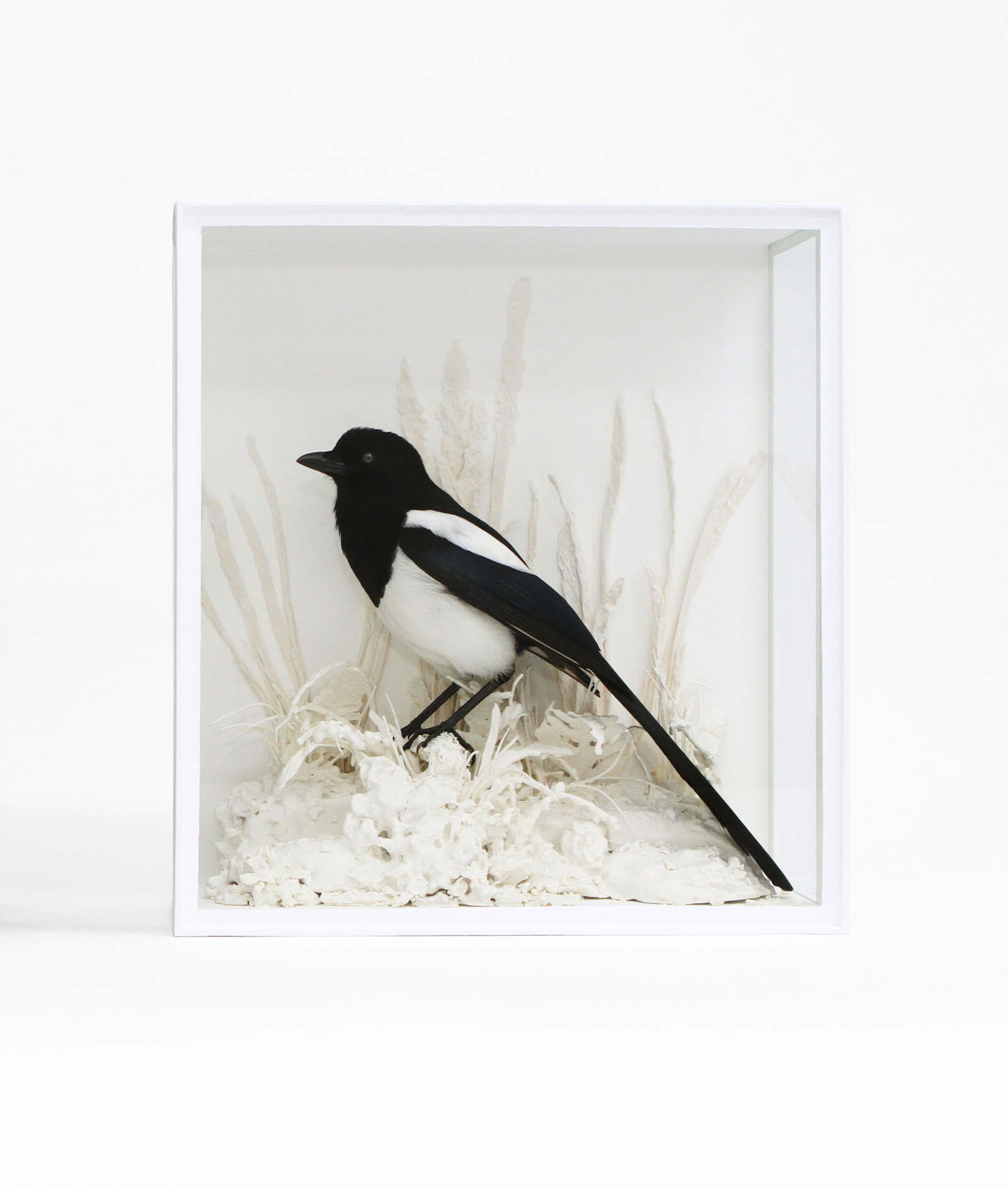Image: Jazmine Miles-Long, Magpie (Pica pica), 2016
On 24 February 2020 I travelled to Colchester to attend a one-day conference on “The Art of Taxidermy”, which formed part of the Art Science Nature Seminar Series organised by the British Art Network https://www.tate.org.uk/whats-on/firstsite/conference/art-taxidermy.
This interesting one-day conference featured several fascinating and complementary papers, relating to taxidermy practices from the heyday of its development as a ‘scientific’ practice in the nineteenth century to the present age.
Sophie Stevens, an animal biologist and curator of the taxidermied natural history specimens on display at Colchester Museum of Natural History, in her paper entitled “(Not) a case of mistaken identity”, gave us an insight into her curatorial work, namely her restoration of Thomas E. Gunn’s (1844-1923) taxidermy display box showing four snow buntings.
Karen Banton, assistant collections and learning curator (Natural History) at Colchester, introduced us to a diversity of primary sources, including letters, sketches and drawings, dissection notes and topographical photographs that were generated through the collaborative endeavours of nineteenth-century collectors and taxidermists in an effort to create ‘scientifically’ accurate taxidermied displays of zoological subjects.
Pat Morris, zoologist and author of A history of Taxidermy: Art, Science and Bad Taste (2010), offered an interesting counterpoint to the previous papers, in his account of Walter Potter (1835-1918) and his more frivolous and playful anthromorphic taxidermied creatures, formerly on display at his museum in Bramber, Sussex.
During the afternoon session, two contemporary taxidermist artists, Hannah Debnam and Jazmine Miles-Long, talked of their work in the contemporary world of taxidermy. Both artists describe their practice as ‘ethical taxidermy’, which refers not only to the ethical procurement of animal carcases (e.g. road kills) but also to the painstaking and respectful reconstruction of the formerly living creature. The papers offered an intriguing insight both into the working methods of taxidermists, but also of the struggles faced by practitioners of this highly skilful practice to have their work recognised as an artform.
The last paper, delivered by Sam Shaw, a scholar and lecturer of nineteenth-century art history, working at the University of Leicester, focused on his experience of planning and teaching a module that explores the representation of animals in art from c. 1800 to the present age. This paper was especially insightful and relevant to my own research and teaching practice, as I am formulating the curriculum of my new and recently validated module Animals and the Arts, to be presented as a new module in the programme for History of Art and Design.
Overall, the conference was an enriching in other ways, too. As a researcher, it proved insightful, as I am exploring new avenues for research into the relationship between humans and animals in relation to art. With regards to teaching, I am currently supervising a HoAD dissertation student on the topic of taxidermy in contemporary art and I hope to attract future PhD students pursuing research in this field. On a personal and professional level, I wanted to know more about the practice and process of taxidermy.
Finally, the event offered useful opportunities to network with other scholars, so I am enormously pleased and grateful that the CDH provided the means for me to attend this conference.
–– Angelica Groom
Dr Angelica Groom is a member of the Centre for Design History and a Senior Lecturer in the School of Humanities at the University of Brighton.
Image credit:
Jazmine Miles-Long, Magpie (Pica pica), 2016
Taxidermy, porcelain, wood, wire, glass paper tape
https://www.jazminemileslong.com/Gallery




Leave a Reply